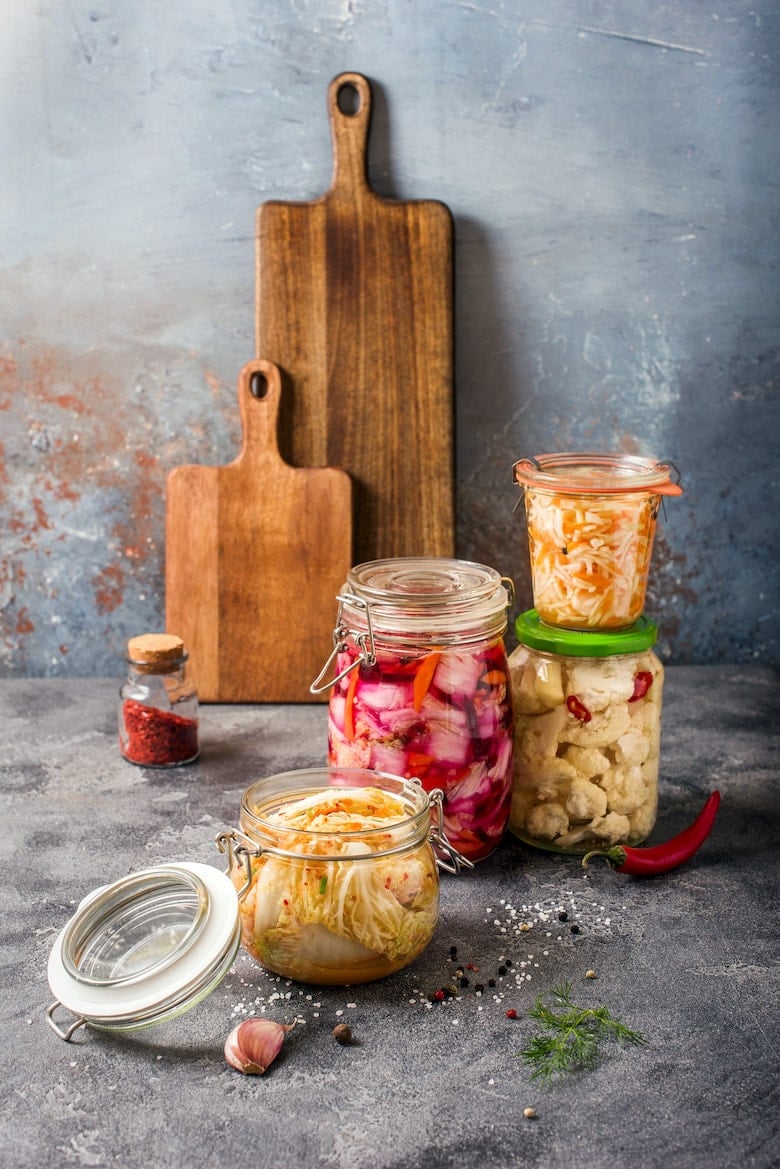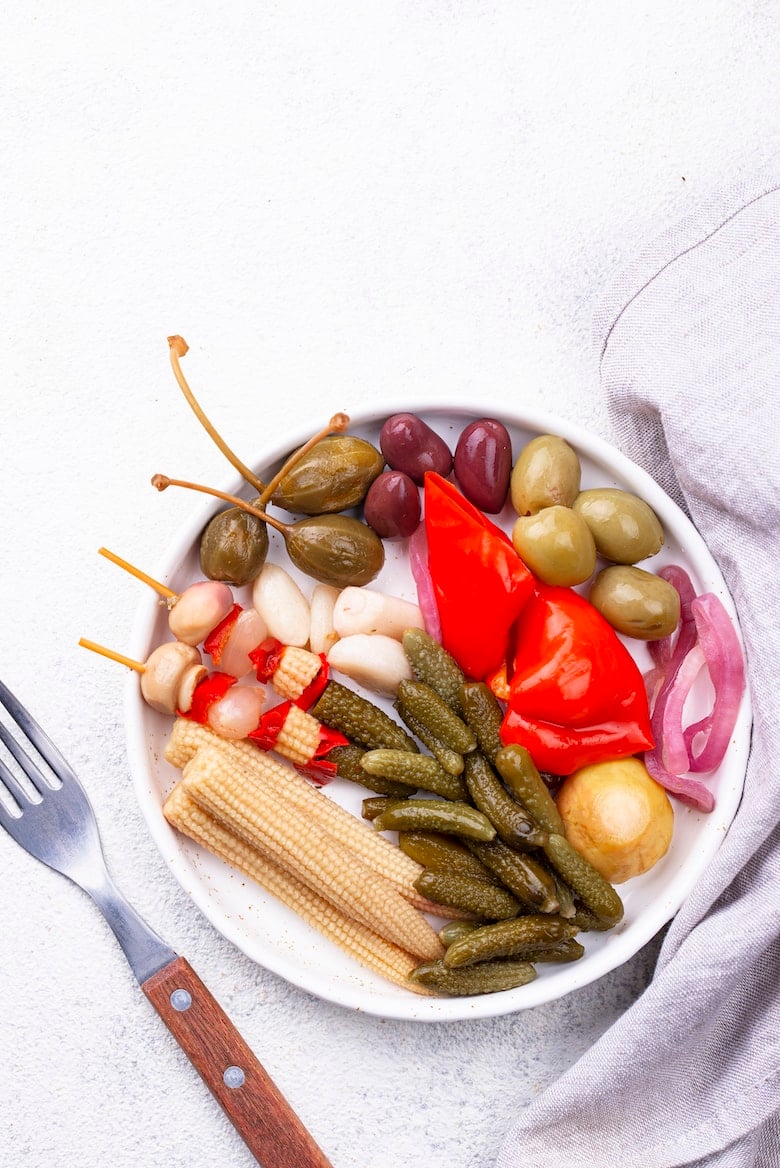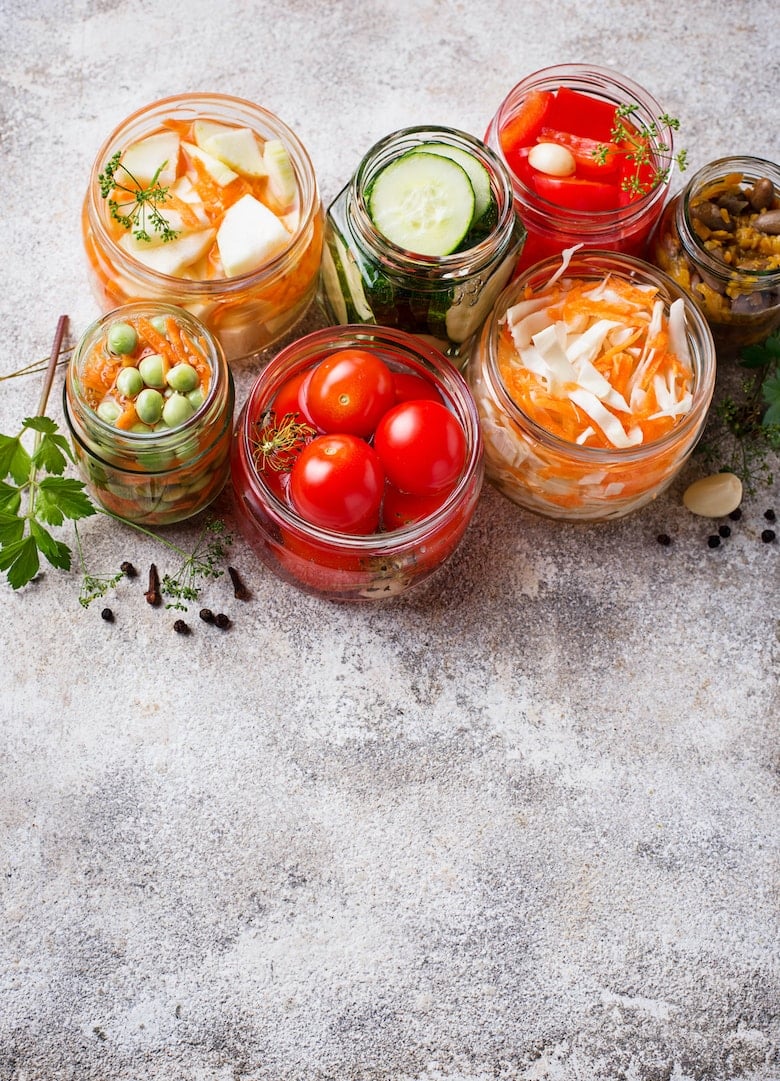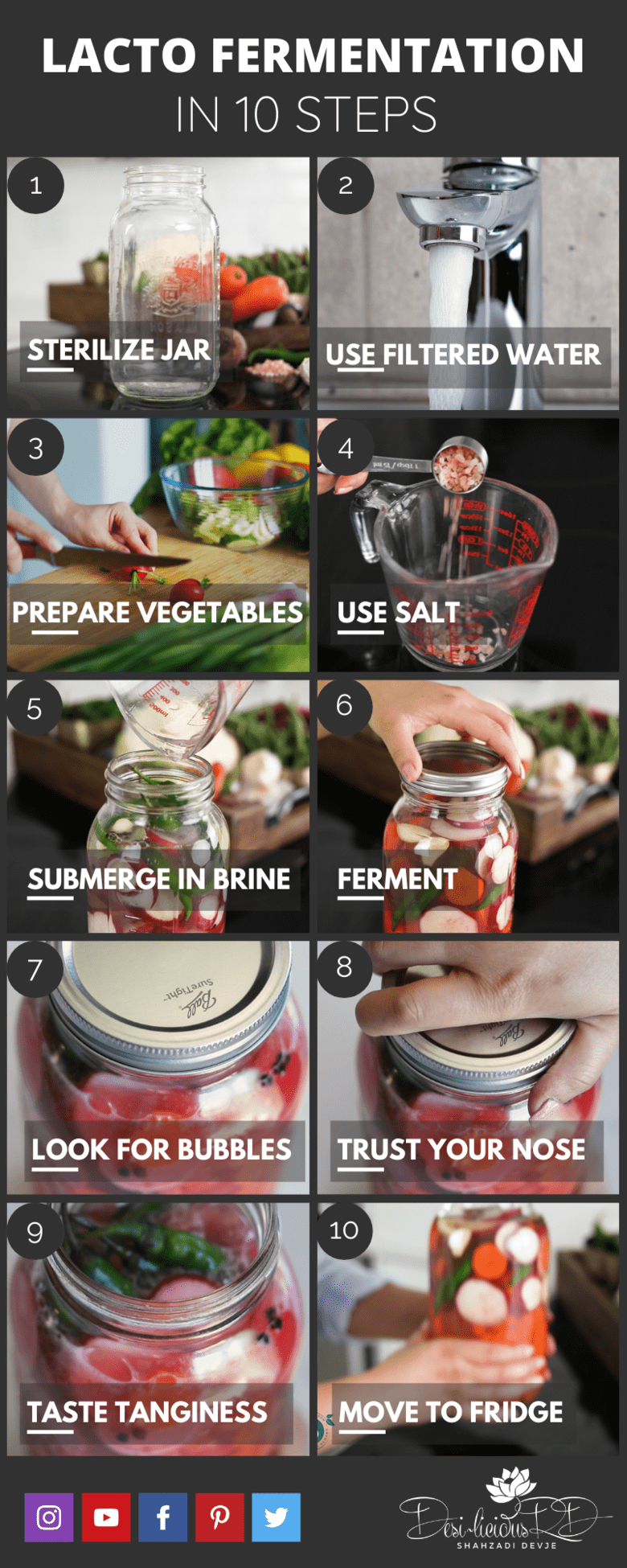Lacto Fermentation: A Beginner’s Guide | Desi~licious RD
Lacto fermentation is more than a food preservation technique. Consuming fermented foods – rich in probiotics – can help to boost the population of good bacteria in your gut, which creates a protective barrier against germs and viruses. This guide discusses the fermentation method and the best tips to help you ferment vegetables at home.
Lacto Fermented foods benefits
As a registered dietitian, I’m often asked, “Are fermented foods good for you?” There’s no denying; a lot of interest and excitement exists in this area. Research links the beneficial health effects of fermented foods to the fact they’re a source of good bacteria or probiotics. What’s more, probiotics may improve immunity, and certain strains could even help prevent specific allergy symptoms. Because many of us don’t get enough vegetables in our diet, I’d say, enjoying fermented vegetables is a simple way to integrate them into meals – with all the added benefits of healthy bacteria.

It’s important, though, to consider that each person’s response to probiotics can vary, and the type of strain, as well as the quantity, can impact results. It goes without saying; consuming fermented foods – rich in probiotics – helps to boost the population of good bacteria in your gut. This creates a protective barrier against germs and viruses.
Besides gut-protecting probiotics, fermented foods are also easier to digest. For example, when milk is fermented to make kefir, some of the lactose (milk sugar) is broken down. This may be helpful to those struggling with lactose intolerance. However, more research is needed in this area.
You may be surprised to know that lacto fermentation can increase nutrients in food and enhance their bioavailability.
Let’s talk about kefir, for example; it’s rich in vitamins and minerals, particularly B-vitamins as well as vitamin K.
We know, that the process of fermentation breaks down many vitamins and other nutrients into more easily digestible forms and increases the palatability and nutritional quality of food. The method also destroys some antinutrient components of certain raw foods, such as oxalates and phytic acids. This is important because antinutrients have shown to reduce the body’s ability to absorb essential nutrients.
Types of fermentation
There are three main types of fermentation:
- Lacto fermentation involves yeast strains and bacteria that convert the carbohydrates in food (starches or sugars) into lactic acid
- Ethanol fermentation aka alcohol fermentation is the process that produces wine and beer
- Acetic acid fermentation is the process where carbohydrates and sugars from grains and fruit ferment into sour tasting vinegar and condiments ( apple cider vinegar and kombucha)

How does lacto fermentation work?
Lacto fermentation is an ancient form of food preservation. When a food undergoes fermentation, natural bacteria and/or yeasts break down carbohydrates in the food, to produce lactic acid. Remember, it’s not the same as pickling; a pickle is simply food that’s been soaked in an acidic liquid, giving it a sour flavour. In the case of fermentation, the food becomes sour because of the chemical reaction between the food’s sugars and naturally present bacteria. There is no acid needed for lacto fermentation.
Traditionally, lacto fermentation involves submerging vegetables in a brine solution of salt and water. The salt-brine method involves two stages:
In Stage 1 of lacto fermentation, vegetables are submerged in salt water to kill off harmful bacteria, while preserving the Lactobacillus good bacteria.
List of fermented foods
Here is a list of lacto fermented vegetables I have tried at home that work well:
- Baby corn
- Beets
- Beans (green)
- Cabbage
- Carrots
- Cauliflower
- Chillies (green)
- Cucumber
- Garlic
- Onions
- Turnips
How long will lacto fermented vegetables last?
Many factors determine the shelf life of lacto fermented veggies; type of food, temperature, environment and container. Fermented vegetables typically last for 4–6 months or longer.

How to lacto ferment vegetables – Top tips
If you’re a newbie fermenter, nervous about the whole lacto fermentation process or wondering how to solve your fermentation problems, read on to discover my top tips to help you ferment veggies at home.
Remember, most lacto fermented foods are made from raw vegetables.
Tip 1: Sterilize jars. You can do this by washing them thoroughly in warm soapy water. Don’t forget the lids. Dry them and send the jars (not the lids) in the oven at 150 degrees Fahrenheit for 15 minutes to sterilize.
Tip 2: Rinse vegetables in un-chlorinated water rather than tap water. Everyone’s tap water comes from different sources; what’s important is that the water should be free of contaminants. If the water is too mineral-rich or doesn’t have enough minerals, it will affect the fermentation process. Bear in mind, chlorinated water can inhibit fermentation, so use spring, distilled, or filtered water if you can.
Tip 3: Opt for clean jars. Make sure the jars are super clean and dry before starting. I use 2-quart jars.
Tip 4: Prepare vegetables. You have several options for fermented vegetables: grating, shredding, chopping, slicing, or leaving whole. It’s really up to you. Since carrots, radishes and beets are pretty dense, chopping these help lactic acid penetrate the vegetable. In my fermented vegetables recipes, I chose some of my favourite veggies to get a variety of nutrients. I chopped some while leaving others whole.
Tip 5: Use salt to ferment vegetables. Salt promotes fermentation by inhibiting the growth of undesirable microorganisms and favours the growth of desirable Lactobacilli bacteria. Salt also offers a slower rate of fermentation by suppressing mould. For this reason, cultured vegetables to be stored for extended periods. Plus, salt results in vegetables that are delicious and crunchy because it hardens the pectins in the vegetables. Not to mention, it could be less expensive than using a starter culture kit.
Tip 6: Use the right type of salt. Use salt that is free of iodine and/or anti-caking agents, which can inhibit fermentation.
Tip 7: Don’t guess amounts and wing it! Use measuring jugs, weighing scales and measuring spoons for best results.
Tip 8: Submerge vegetables completely. Ensure the vegetables are submerged in the saltwater. You can add some more water on top to cover the vegetables completely.
Tip 9: Label the jar with the date you started fermentation. That way, you’re not left guessing.
Tip 10: Seasons matter! In the Summer, the vegetables will ferment faster than the winter, where it could take up to 7 days.

Consuming #fermentedfoods – rich in #probiotics – can help to boost the population of good bacteria in your gut, which creates a protective barrier against germs and viruses. #lactofermentation
Click To Tweet
Tip 11: Remove any mould. If you notice mould at the top, discard it! Remember, the top of your vegetables (in the jar) is exposed to oxygen, which can promote yeast and mould growth, but everything below the brine should be fine because of an oxygen-free environment.
Tip 12: Ferment for 2-3 days. I leave the jars out on the counter for 2-3 days (around 72 degrees Fahrenheit) before moving them into the fridge.
Here’s how to know if your vegetables are successfully fermented.
Here are the best tips to help you know if your vegetables have successfully fermented.
Tip 13: Look for bubbles. The lactic acid fermentation process produces bacteria that release gases when they feast on the vegetables. These gases are often visible as bubbles after a few days at room temperature.
Tip 14: Trust your nose! Opening the jar after a few days may release a sour, vinegary aroma.
Tip 15: Taste the tanginess! Tasting your veggies will also confirm if they are ready to be moved to the fridge. They should taste tangy and DELICIOUS!
Tip 16: Avoid cross-contamination. Always use a clean spoon when serving, versus eating out of the jar. You want to avoid contaminating the entire batch with germs from your mouth.
Tip 17: Move to the fridge. Once in the fridge, these will keep for several months.
Lacto fermentation: Ways to include fermented vegetables at meals

Fermented foods, in general, offer so much variety and match well with pretty much any dish. Here are some suggestions you may want to try:
Breakfast
– Add yogurt, kefir or buttermilk to your smoothies or oatmeal
– Top eggs or avocado toast with fermented salsa vegetables
Lunch/dinner
– Add fermented vegetables, like kimchi, to sandwiches, burgers and wraps
– Make a soup with miso paste
– Add sauerkraut to top coleslaws and salads
– Add kimchi to stir-fry dishes
– Use miso for sauces, marinades and dressings
– Make tempeh burgers as a plant-based alternative to animal-based protein
Want to create fermented vegetables on your own? Try my recipe.
What’s your favourite way to enjoy vegetables? Have you tried lacto fermentation before? Share in the comment section below!
If you try this recipe, would love to hear from you! Leave a comment, rate it, or share a photo and hashtag with #desiliciousrd on Instagram, Facebook and Twitter! Can’t wait to see your photos.
Hungry for more?
Subscribe to my newsletter for free recipes, nutrition tips and all the latest updates.
The post Lacto Fermentation: A Beginner’s Guide | Desi~licious RD appeared first on Shahzadi Devje, Desi~licious RD.
Comments
Post a Comment